Whether you are thinking of relocating to Vilnius or already live here and would like to explore the town better, it can be difficult to find information on the districts outside the Old Town. Is it for that reason or some other, but very often the foreigners living here for sometimes years hardly know areas of Vilnius apart from the Old Town, the New Town, Zverynas and Antakalnis. But Vilnius has so much more to offer, if only you are just willing to jump on a bus or a bike and explore further.
Before we start our tour through the localities, let me explain one of the main things you need to know about Vilnius in general. It is a city, which did not exist, until in 1300s the Grand Duke of Lithuania dreamt it, while taking a nap after his hunt. From the little I know about urbanism in Europe, there were usually more practical or political motives behind chosing a location for a town. Building a city on a whim, just because you had some dream is something rather unique, and this “dream-come-true” origin gives Vilnius a very unique atmosphere of a (sometimes a little gloomy) fairy-tale.
I prepared this guide with some historical and practical information about some of the most interesting districts of the city. I also allowed myself to weave in some personal opinions, because after all, this is a blog and not a tourist bureau! And it wouldn’t be my style at all, if I didn’t give you some tips on having a snack or a coffee in each location. Because after all, no one can deny that you can claim having explored a place, if you haven’t sat down there to eat. Or is it just me traveling through my stomach?
Table of Contents
- 1 The Old Town
- 2 The Centre
- 3 The New Town and the Station District
- 4 Uzupis
- 5 The New Centre and Snipiskes
- 6 Zverynas
- 7 Rasos and Markuciai
- 8 Belmontas and Puckoriai
- 9 Pavilnys
- 10 Naujoji Vilnia
- 11 Antakalnis
- 12 Zirmunai and Siaures Miestelis
- 13 Lazdynai
- 14 Jeruzale
- 15 Soviet micro-districts of Vilnius
- 16 Other districts of Vilnius
The Old Town
About the area: It is most likely that if you know something about Vilnius, then it is the Old Town. The Old Town of Vilnius is walk-able, covering the area of less than 4 square kilometres. Many guests of the city are good in math and quickly calculate the number of days or even hours, which will be enough for them to cover this distance. Don’t make this mistake and allocate enough time for your visit. These will be some of square kilometres most densely packed with architectural beauty, churches, city vibe and great beer pubs you have ever experienced in your life.
Streets to walk: The main street of the Old Town is Pilies (The Castle Street). Make sure you also visit narrow street of the former Ghetto quarter (Antokolskio, Stikliu, Gaono).
Sights to see: Explore the Vilnius University architectural complex, the Cathedral and the Town Hall squares, the Presidential Palace and St Anna Church.
Places to eat in: On a summer day have some mussels and a beer in Rene, where you can sit in the middle of the street and really feel yourself being a part of the Vilnius Old Town.
The Centre
About the area: The centre of Vilnius is everything, which is not an Old Town, but not any suburb either. I am actually struggling with the words to make it interesting to you, as it is the part of the town, which has failed me badly. If I have to pick my favourite place in Vilnius, I would go with the Lukiskes square, but not the square you can see now. Just a couple of years ago it was an open space of green grass, red sandy paths (the left-overs from the times when it was called Lenin’s square – the sand faded over the time and looked just normal), very old benches, which almost swallowed you, when you used to sit down and the best – old lilac and chestnut trees everywhere. But these times have passed, and in order to make the square cooler, it was re-made into what you can see now. No lilac to be found.
Streets to walk: The main street of the city centre and Vilnius in general is Gediminas Avenue.
Sights to see: In the centre you will find the Parliament (Seimas), National Library and the KGB museum.
Places to eat in: Try Esse – a restaurant which has probably survived the longest on Gedimino avenue.
The New Town and the Station District
About the area: Don’t be fooled by the name. Naujamiestis (the name of the New Town in Lithuanian) is actually one of the oldest districts of Vilnius. These areas used to be rather poor, dirty and neglected in the past years, but now experience a real spring. Similarly to the changes you can see in other major cities (Berlin could be the best example), the aesthetics of half-abandoned industrial monsters suddenly became trendy, and the old factories are rebuilt into lofts, trendy hostels, cafes and concert venues.
Streets to walk and Sights to see: The best place to experience Naujamiestis is to get a knowledgeable local or a guide to take you around. Although it is now full of trendy places, it can be hard to learn the hidden story just by walking around.
Places to eat in: Now it is here you will find the best coffee spots. Get a cuppa in Crooked Nose and Other Stories or Backstage Cafe.
Uzupis
About the area: The name of Uzupis roughly translates to English as “behind the river”. The district was popular with artists for a while, and as it often happens with those forgotten districts near the city centre, some years ago it was suddenly “remembered” and the property prices went high up. In 1997 the district proclaimed its independence from Vilnius and Lithuania altogether and called itself the Republic of Uzupis. The Republic has its sheriff, ministers, a flag and a Constitution.
The constitution has many great and reasonable points, such as “Everyone has the right to be in doubt, but this is not an obligation” and “Everyone has the right to love and take care of the cat.” It also has three motto, which I find especially appealing: “Don’t Fight”, “Don’t Win”, “Don’t Surrender”.
The district of Uzupis is often compared to Monmartre in Paris or Christiania in Copenhagen.
Streets to walk: The main street is Uzupio, but walk around to the street of Paupio to see the plates with the Constitution in many languages.
Sights to see: Some of the great times to visit Uzupis can be 1st of April (the independence day of Uzupis) and St Patrick’s Day, when the river of Vilnele is dyed green.
Places to eat in: There are many small cafes (including one of my favourite ones) and restaurants, so for sure you will find something you like. But the two classics are Uzupio Kavine (which has a balcony above the river) and Uzupio Picerija.
The New Centre and Snipiskes
About the area: The financial centre and Vilnius Municipality – the glass buildings, creating the new skyline of Vilnius – are called the New Centre. The best way to admire it is probably from across the river, as those buildings offer rather little to see from the smaller distance. But walk behind them, and you are in the different world: the micro-district of Snipiskes, which is nicknamed Shanghai. In almost the middle of the city you will find old wooden houses with small gardens, outdoor toilets and street water pumps.
Streets to walk: The main street of Snipiskes is Kalvariju street – one of the biggest and busiest streets in the city. The small streets of Shanghai will have names, but there will not be that many street signs, so the best thing is to just get lost in those streets.
Sights to see: The Church of Archangel Raphael, the Planetarium, the above-mentioned skyline and the famous Kalvariju Market – the biggest Market in town. In spring you can also admire the blooming sakura garden, and in summer have a picnic by the river near the VCUP mall while watching the hot air balloons.
Places to eat in: The best would be to get a take-away coffee or a sandwich and go to the roof of Swedbank building near the river of Neris.
Zverynas

About the area: Zverynas is one of the most central, greenest and as a result most elite district of Vilnius. Until the 19th century it was more of a forest reservation for animals, established for hunting purposes. It actually joined Vilnius only in 1901. In Zverynas you will find many beautiful and once-colourful wooden villas, two churches and the only kenesa in Vilnius (the praying house of the Karaite community of Lithuania). You will also find one of the entrances to the Vilnius’ biggest park – Vingis park.
Streets to walk: The main street of Zverynas is Kestucio, but wander into the smaller streets Moniuskos, Pusu, Traidenio and Birutes to see the shabby or newly-renovated villas and pieces of modern architecture.
Sights to see: Visit the kenesa and spend a warm afternoon playing frisbee near the river in Vingio parkas.
Places to eat in: Panama Food Garden. Just check in advance, sometimes (especially on a Friday or Saturday night) it can be fully-booked.
Rasos and Markuciai
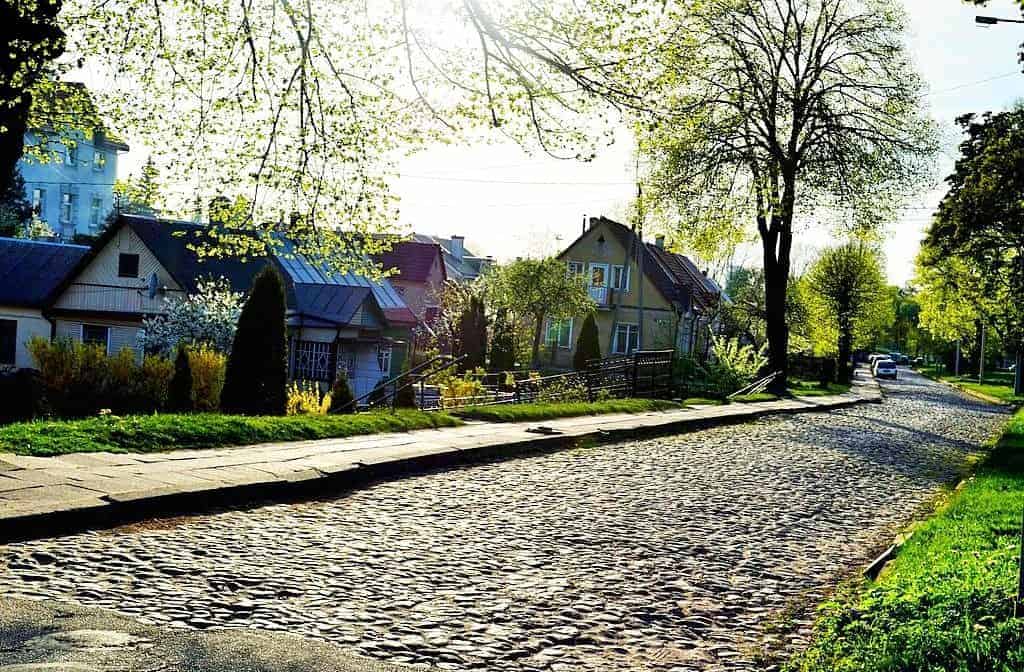
About the area: In Vilnius you don’t need a time-machine to take you to the past. Drive, walk or take a bus to the district of Rasos, and you will feel transported some 100 years back. It is a weird mix of stone-paved streets, railway and private stone houses with gardens full of dahlias, a couple of churches and a monastery, a hospital, a prison and a cemetery. A bit further away from Rasos there is a district of Markuciai. Markuciai at the moment is a meeting point of the extremes – trendiest newly-built loft houses, overlooking Vilnele river, a couple of tall Soviet blocks of flats with shared kitchens, and some private wooden houses with water and toilet facilities outside: all this in almost the city centre of Vilnius.
Streets to walk: Walk the Ramybes (Tranquility) stone-paved street along the railway.
Sights to see: Make sure you visit the cemetery of Rasos in the evening of the 1st of November – the All Saints’ Day. The cemetery is full of candle lights and makes really an unforgettable sights. And for any other time of the year head to Markuciai park with its museum for the Russian poet Alexander Pushkin: the location of the museum is not accidental, as the poet’s son used to live in that very house.
Places to eat in: I will be honest with you – there is nothing I can recommend there at the moment. But both places are very close to the city centre and Uzupis, so it will be not much trouble to just come back there, when you get hungry.
Belmontas and Puckoriai
About the area: Belmontas is a suburb of Vilnius, now best known as a place to have a cheesy wedding photo session or a decent grilled meat plate in the local restaurant. It was originally a municipal artillery unit, later becoming a mill and later yet – a hotel, restaurant and both local and tourist attraction. Puckoriai is an area right next to it with the impressive exposure and the view over the river.
Streets to walk: There is basically just one street in the area, leading to the restaurant. There are however many paths for you to walk. From the restaurant you can follow the signs and the river Vilnele to walk a loop, visiting the old mill, the exposure (which is by the way the highest in Lithuania), and the woods around.
Sights to see: In addition to the ones named above, there is one of my favourite half-secret location in Vilnius. Following the main walking trail of Belmontas, you will pass by a large apple tree orchard, composed of all possible varieties of apple trees. If you happen to be in Vilnius in May, do put it on your list. In my opinion it is by far more beautiful than the sakuras in the New Centre, and much less touristic. You can also admire the view over the orchard from the top of Puckoriai exposure.
Places to eat in: Well, Belmontas restaurant of course. You’d be surprised to find rather good and decently-priced food in such a tourist locations.
Pavilnys
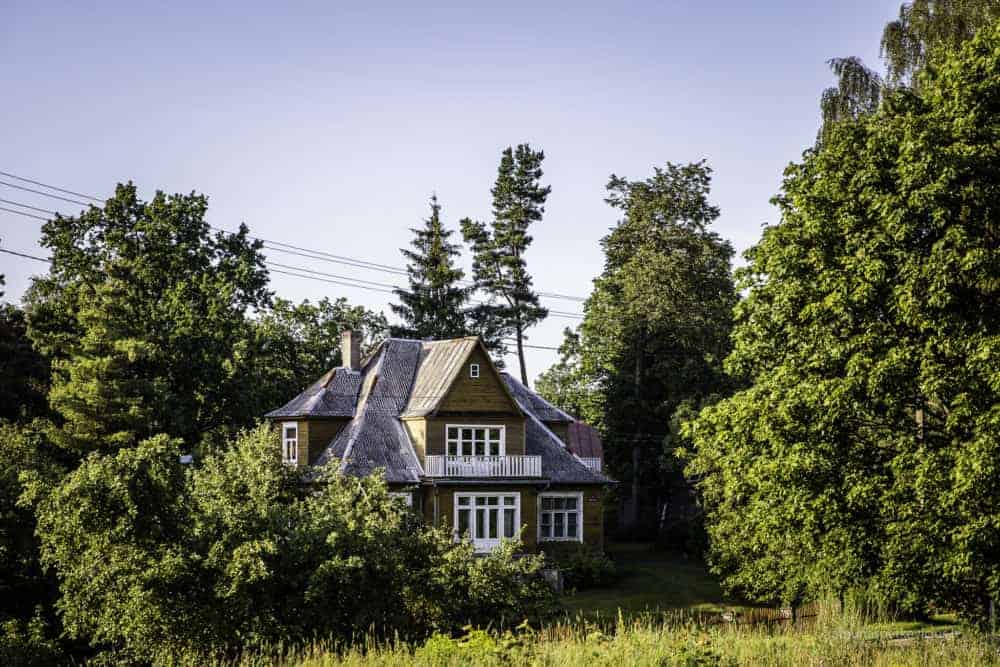
About the area: Pavilnys is a rather small and under-explored area in the South of Vilnius, just some 15 minutes drive away from the Old Town. It consists of two main parts: Lower Pavilnys and Upper Pavilnys. The former consists of houses, which were initially built for the railway workers, and the latter of villas of citizens, who came here for the summer holidays. After roughly a 100 years of existence, Pavilnys has experienced a sudden spike of growth, with many citizens turning their cottages into residential houses. In wider circles Pavilnys is best known for the Pavilnys Regional park, and in smaller ones – as the place I have chosen from all the world to call my home and won’t stop writing posts about.
Streets to walk: Juodasis Kelias (meaning the Black Road, called so as this was the direction of deportations to Siberia in times of Soviet Occupation) is the main street leading you towards Pavilnys from the city centre. Walk around Pavilnys through the streets of Kolaso, Paeglines and Vandens.
Sights to see: Check out the old wooden Church of Pavilnys, an old wooden post house of Pavilnys and old wooden villas, typical for this district. The villas are rapidly disappearing, being exchanged with the modern houses, but the ones left are unique and beautiful.
Places to eat in: Sadly, there are none. Oh wait, on Google you might find Tores Bravoras Restaurant, and you are welcome to visit it, if you enjoy bad food paired with amazing view and arrogant service. And if you just want the view, the best idea is to pack a sandwich and a thermal cup of coffee and explore the hills of the park yourself.
Naujoji Vilnia
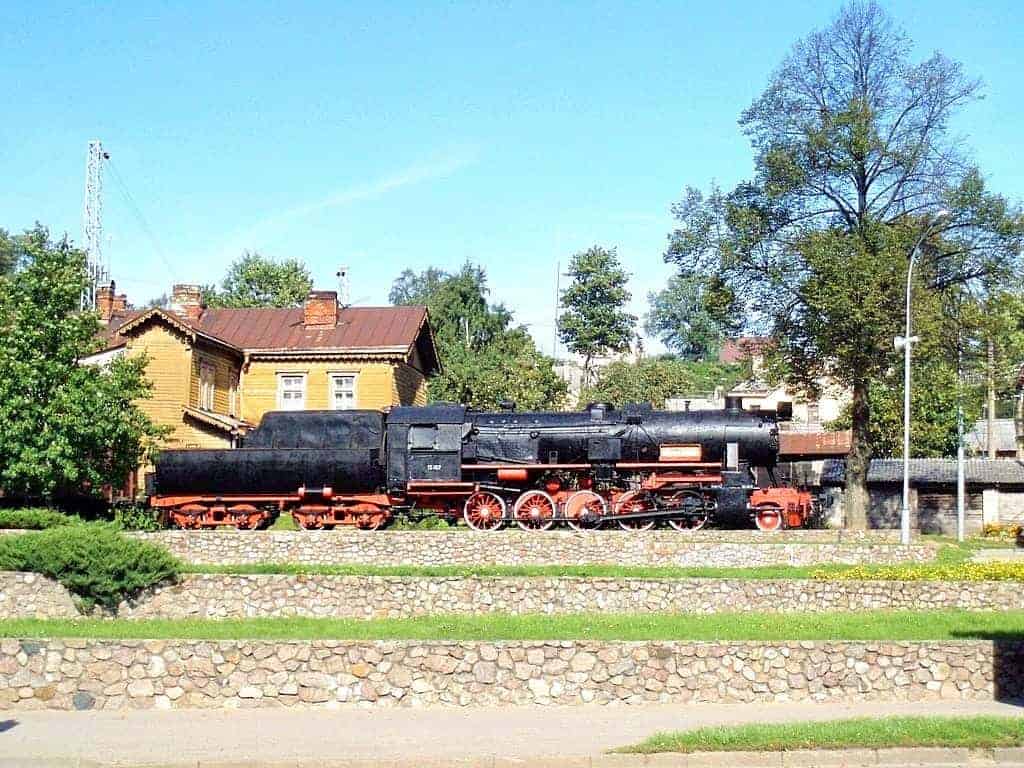
About the area: Few tourists visiting Vilnius make it to Naujoji Vilnia. Oh, who am I kidding: very few citizens of Vilnius itself ever make it to Naujoji Vilnia. Which is a pity, it really is a remarkable place and I believe it will change very soon. Naujoji Vilnia (also frequently called Vilejka because of its Polish name Nowa Wilejka) used to be an independent town, and in spirit it remains so until now, although being a part of Vilnius now. Its history starts with factories. The first one – a paper fabric – was built in 17th century. The town grew in the 19th century, as the Warsaw – Saint Petersburg railway was built and went through the Naujoji Vilnia. During the mass deportations of Lithuanians to Siberia under the Soviet occupation this railway station became the last stop in Lithuania before the long journey.
The factories closed down in 1990s, and the district now has one of the highest levels of unemployment in town – and as a result some of the cheapest flats too.
Streets to walk: Walk around the streets Parko, Pergales and Geroves to see the sights, or stroll on Kojelaviciaus and Pramones for the true post-industrial feel.
Sights to see: In the centre of the district you can see the monument of the lying Cross and a rail wagon – this is the monument for the deportees to Siberia. Also make sure to check out the churches of St Kazimieras and St Mary the Queen of Peace.
Places to eat in: There is a little cafe called Razmarin, where you can have a lunch, a coffee with a piece of cake or a drink. I have a story related to this place, which I might tell some other time, but just trust me that this is a really nice place.
Antakalnis

About the area: One of the oldest and the biggest areas of Vilnius. If some areas (like Uzupis) were poor and then turned trendy, Antakalnis was elite since the beginning. It used to belong to the nobility, and this nobility has built parks, palaces and villas all over the places. During the Soviet times the existing planning was enriched with some hospitals, universities and housing blocks.
Streets to walk: The main street in Antakalnis is (surprise!) Antakalnio. Walk further to the streets of Grybo, Zolyno and Vileisio (which will take you along the river).
Sights to see: You can start your tour with the Church of St. Peter and St. Paul. From there continue straight through the smaller streets of the area to the Antakalnis cemetery and further to Saules cemetery, which are peaceful, ancient and definitely worth seeing. On the way back walk along the river and admire an interesting mix of different architectural styles, starting from palaces, to Soviet blocks to modern Nordic design.
If you want to explore further, take a bus taking you to the Botanical garden of Kairenai. The best time to visit could be in May, when a rhododendron garden is in bloom.
Places to eat in: Right next to the Church of St. Peter and St. Paul you will find a little wooden building, which houses a restaurant called “Sakura”.
Zirmunai and Siaures Miestelis

About the area: Zirmunai and Siaures Miestelis (this name translates to “Little City of the North”) are the neighbourhoods right across the river from Antakalnis. The origins of Zirmunai is rather similar to Antakalnis, but its later destiny is different. During the Soviet times the area of Siaures Miestelis was used for military purposes and was a no-entry zone for the common citizens. In the meantime the Lithuanian architects developed the urban plan for the district of Zirmunai, which received one of the highest architectural prizes in the USSR.
Now you can (and should) enter Siaures Miestelis, where most of the trendiest restaurants of the city can be found.
Streets to walk: The main street is Zirmunu, but you can explore the small streets and the riverside to get a better feel of the area.
Sights to see: Check out the neoclassical Tuskulenai Manor. The area is best known as burial grounds of people executed by the KGB in 1944–1947, and the Manor is now administrated by the Lithuanian Genocide and Resistance Research Centre.
Places to eat in: Check out Paloma Bistro in Siaures Miestelis, which opened recently and already got a rather good reputation.
Lazdynai

About the area: If you are even a bit interested in urban planning, Lazdynai microdistrict of Vilnius is the place to visit. It is located in a green area near the river of Neris. This micro-district was planned in the 70s and at that time was a true pride of the urban architects. It was presented at various exhibitions across the Soviet Union and received the Lenin’s prize. Disregarding your views on Lenin as a figure, we must understand that in the 70s it was the kind of Nobel prize of Soviet Union.
The district became much less prestigious with time, and now you can look for a rather cheap property there.
Streets to walk: Oh, definitely Architectu. This is a round street, and for me is a true nightmare, if I need to find a particular house on it.
Sights to see: There is a city park called “The park of fairy-tales” (or “Pasaku Parkas” in Lithuanian). Just a couple of years ago it really was a place of fairy-tales in the worst sense of this word – attracting drug addicts, dodgy young people in old black BMWs and other types you wouldn’t necessarily like to meet on a dark evening among the pine trees. However, recently it got all cleaned up and now is a rather cheerful place.
Places to eat in: The TV Tower is not technically in Lazdynai, but rather close to its border. Did you know there is a restaurant in the middle part? It rotates, so you can have the view over the whole city of Vilnius (and a couple of other towns on a clear day) while you are enjoying your coffee or lunch.
Jeruzale

About the area: Not only is this district called Jerusalem (this is how the name of this city sounds in Lithuanian), but it also has its own Via Dolorosa. The district of Jeruzale is a rather new district of Vilnius city, but it is named after the village which existed in this location since 17th century.
Streets to walk: Skip the streets and head straight to the woods.
Sights to see: The main sight is the St Cross Church of Kalvarijos and the Via Dolorosa starting from there.
Places to eat in: After all the forest walks, grab a pizza to the Submarine pizzeria.
Soviet micro-districts of Vilnius
As the name suggests, those micro-districts were built during the Soviet times to accommodate the quickly growing population of Vilnius. Those huge blocks of flats, which look similar to each other might not give them the most charming looks. In my time of youth hunt for aesthetics I rejected them, but with time (and especially after moving out to my very different Pavilnys), I actually understood, how practical they were. The blocks are often built in a way to create a sheltered inside yard with the entrances of the houses being on the outside, but the windows of most of the flats looking on the inside. This way not only can you have a quite bedroom (even if you live next to a busy street), but it is also very practical to be able to watch yours and other neighbours (older) children playing outside. Also, any citizen of Vilnius (and many other similar cities) will remember his or her mum shouting through the window: “Come home, dinner is ready!” and you shouting back: “Mum, five more minutes!”
If you are a foreigner, living in the city centre of Vilnius and most of your aquaintances here a foreigners as well, you might have an impression, that many people in Vilnius also live around the centre, and those micro-districts are a kind of periphery. Well, let me give you some numbers to change your idea:
The number of people living in the Old Town of Vilnius: just under 20.000
And now to compare:
Seskine: 37.000
Fabijoniskes: 36.000
Pasilaciai: 25.000
Lazdynai: 32.000
Karoliniskes: 31.000
Justiniskes: 31.000
And these are not all, there are even more of them. What I am trying to say is: you have not really seen Vilnius, if you have not seen where almost ALL of this city lives. And it is not the Old Town.
Other districts of Vilnius
I hope I have given you some information about Vilnius geography, and also some inspiration to explore it more. This is the longest post on my blog so far, but there are still so many more places, which I have not covered. For those, I will give you just a brief description, so you can check, whether it is something you fancy learning more about.
Grigiskes – this used to be a satellite small town close to Vilnius, but after the recent expansion connected to the city. Although the official status has changed, Grigiskes still holds the atmosphere of a little independent town, mostly known for its toilet paper factory.
Naujininkai – a micro-district very close to the city centre, just behind the railway station. Until now a rather poor district, I believe it is the next after the New Town to experience a surge of development and popularity.
Gariunai – a district best known for its huge covered market and water-cleaning plant.
Zalieji Ezerai – the district of Green Lakes, which are actually green in colour. Beautiful outside the season, but way too crowded in summer.
Aukstieji/Zemieji Paneriai – Industrial zones with many factories and a trolleybus park.
Kirtimai – industrial zone next to the airport, best known for the proximity of Roma settlement (nicknamed “taboras” in Lithuanian).
Valakupiai – city beach by the river of Neris.
Santariskes – where most of the hospitals of Vilnius are located.
Dvarcionys – originally (and still) a location Dvarcioniu Keramika – tile factory. A couple of blocks of flats, set in the middle of the forest, near a small beautiful lake.
Vilkpede – previously known well for its hospital, but after the main hospital area moved to Santariskes, Vilkpede is probably only known to the people who actually live there.
Verkiai – more of a park and a forest than a conventional living area, famous for the Palace of Verkiai, cycling paths and amazing views.
Liked this post? Pin it!


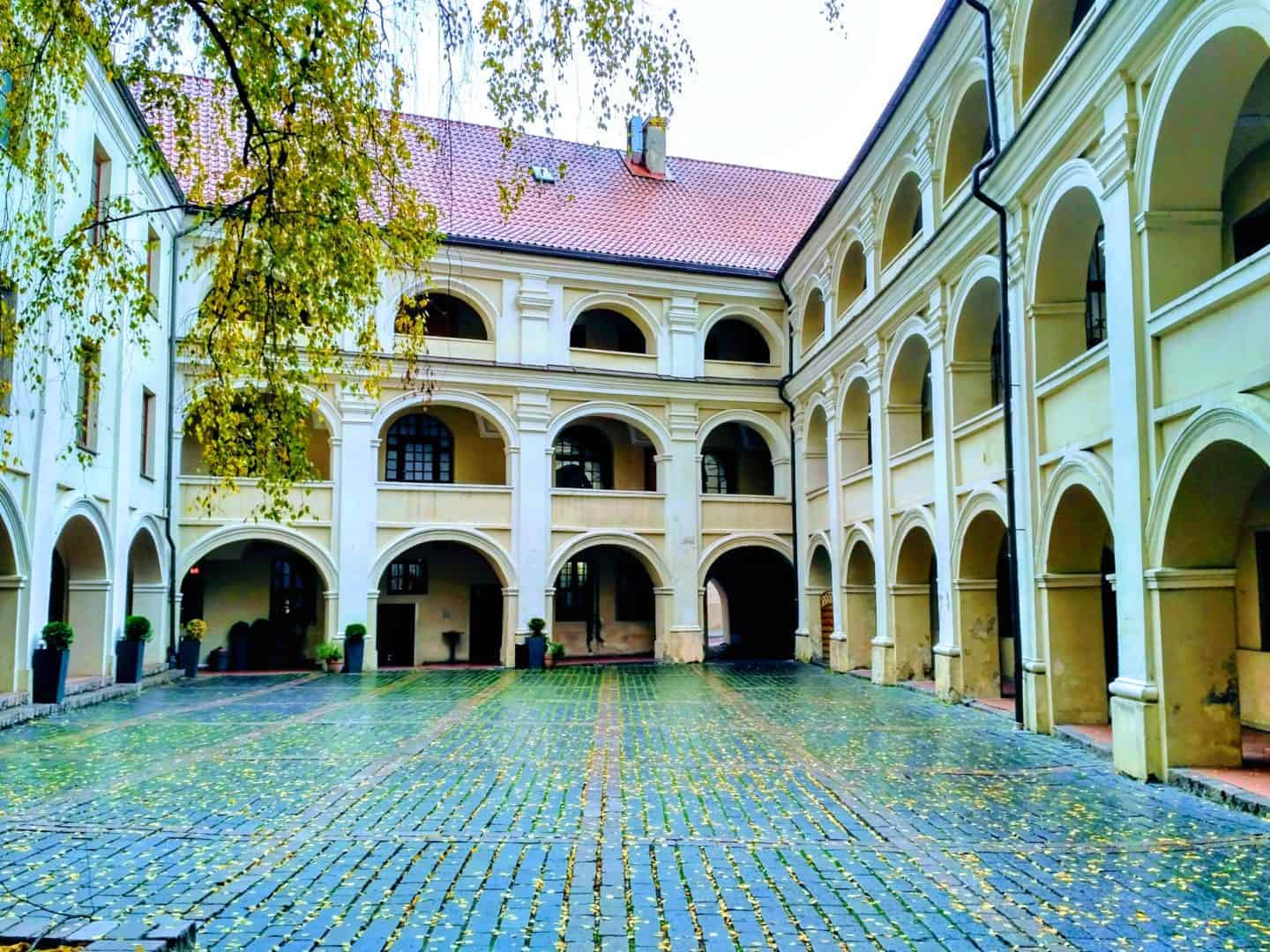
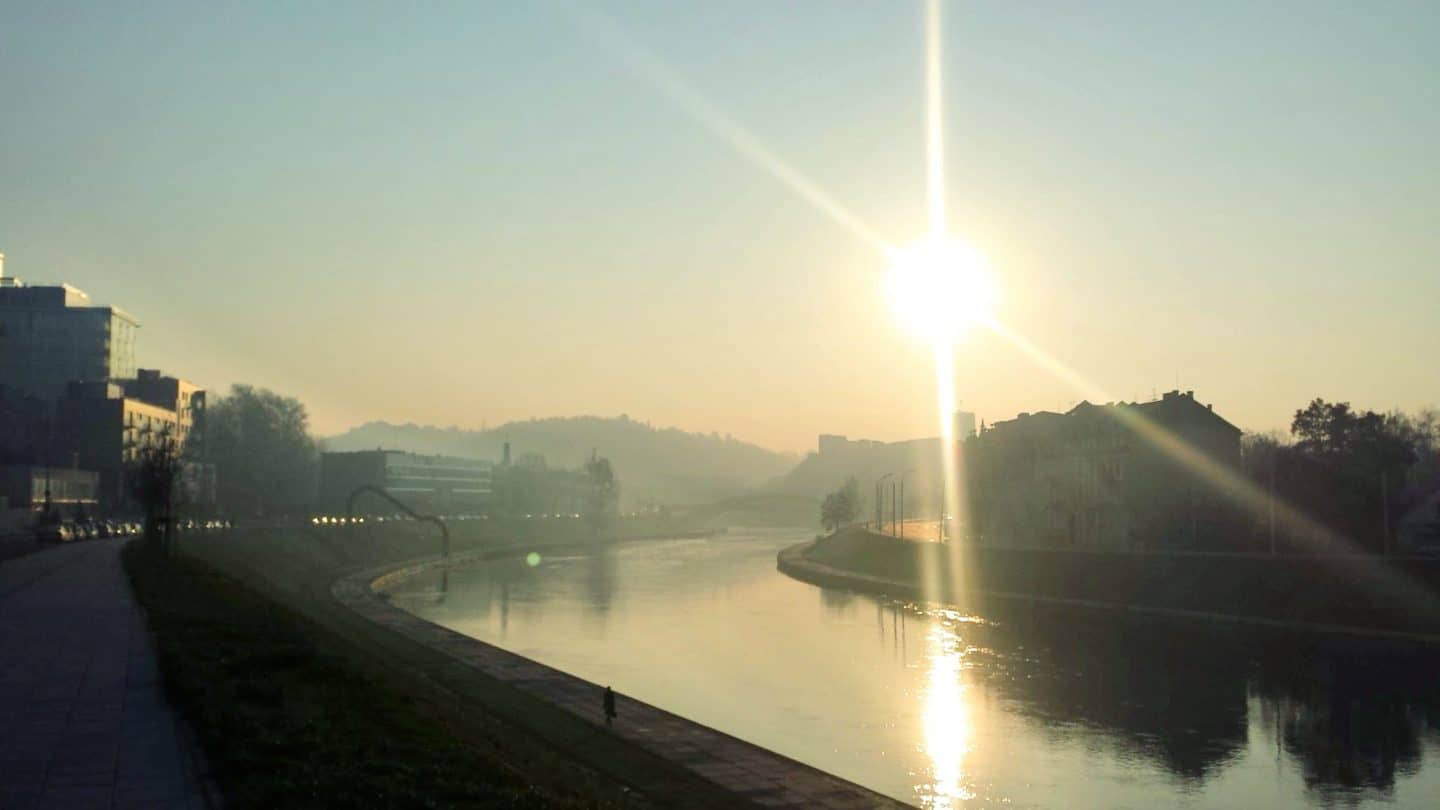
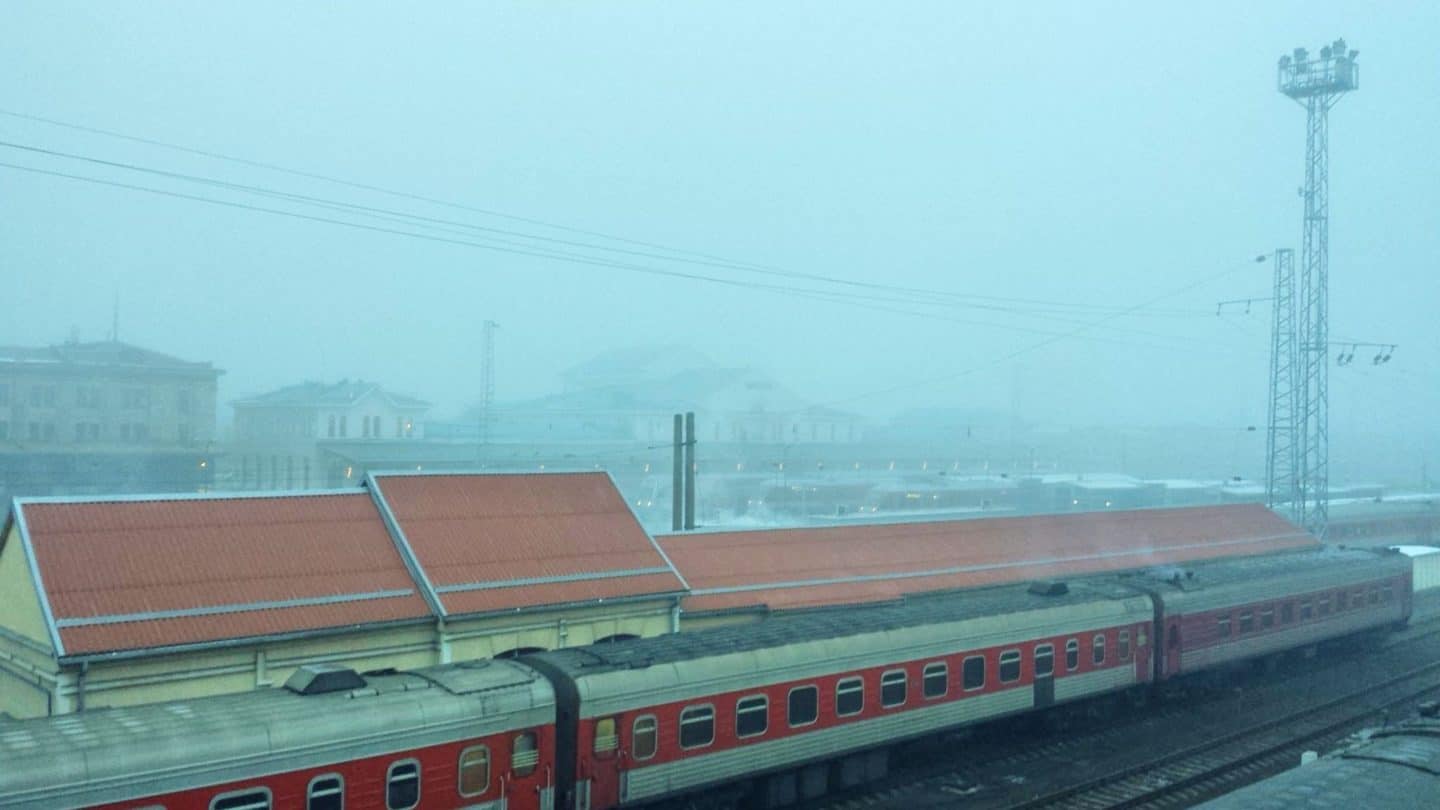




I loved Vilnius when I visited, but it was winter so it was harder to get around. This has given me great inspiration for when I go back!
Yes, winters here can be tough. We had -25C this winter for several weeks. But now it’s spring and the city is lovely, with those blooming cherry trees everywhere. I hope you’ll have a chance to visit it again during some warmer season. 😉
What a GEM! Thank you very labai ?
Thanks! Glad you liked it!
There is a difference between Naujamiestis AND Naujininkai. and yes, Į live in Vilkpėdė: it’s famous for the “quarter of the blind” (aklųjų kvartalas): workshops, library and living infrastructure
A lovely list of places, I can’t wait to explore some more of these now that the warmer weather is here ?
This post is so thorough! Thank you!!
http://www.travelustblog.com
Vilkpėdė iš famous for Vingis park! And pretty well known district of the blind people. I would like to mention that some people will say they live in Savanoriai area rather than in Vilkpėdė, unless they live uphill. I could see a slight development in Savanoriai (new houses recently built, more young people moved in), so i believe one day it will become more popular since its location is pretty close to the city center (maybe after Naujininkai get developed hahha) ?
P.S. Students’ town Saulėtekis is not in the article ?
Fantastic list, well written, definitely remains in “my pocket” for reference. Ačiū!
Hi, thanks for writing this. I am searching for information about the soviet micro-districts, so this was really useful. Do you know if it is possible to easily visit them by taking public transport or do I need a car? I would love to go there to take some photos. Thank you.
Hi Jason, I’m really glad you’ve found it useful. The micro-districts are fully accessible by public transport. You can download an app called Trafi when you are in Vilnius, and just put the current location and the point where you want to go. It will then show you the routes and directions using the public transport. It works much better than Google Maps in Vilnius in that relation by the way.
Great post! We are thinking about visiting Vilnius in januari. Do you have a recommendation for which area would be nice to live in? We like to have close to nice restaurants and public transportations.
Hi and thank you very much for the nice guide!
Me and my boyfriend are moving to Vilnius for a one year exchange at the music academy. Which districts would you recommend for us to look for an apartment?
I am interested in city history and archithecture and we have scholarships, so we have some economical freedom.
A relative had said he was from Laporan, Wilnos. Any idea where that is? Thanks
I am writing from Houston, Texas, USA, where I have lived since 1998. I am very, very interested in Vilnius and Lithuania as a whole. From afar, I truly admire the people of Lithuania and what they have done over the last 40 years. My wife of 29 years and I are both 62 years old and we have two late teenage daughters both adopted from China at the age of 13 months. From the depths of my heart I thank you for a wonderful blog entry, as I hope to visit Vilnius sometime in the not too distant future.
I am considering moving to Lithuania a few years from now. Yes, I will definitely look at areas other than old town Vilnius. Thank you for providing some information on areas other than just old town Vilnius.